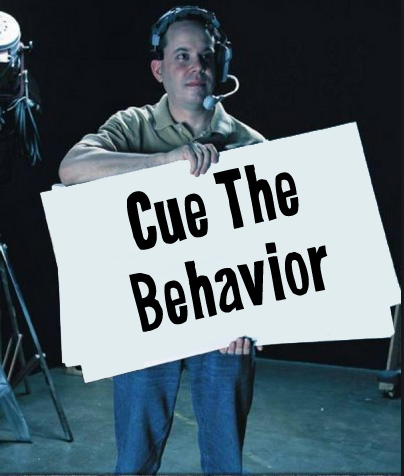What’s the difference between a cue and a command? Being a crossover trainer, that is someone who started training dogs when commanding was all that was taught to someone who now trains without force or pain, I can tell you there’s a big difference between the two words. Though both cuing and commanding refer to hand or verbal signals given to the dog to request a behavior.
 A command assumes forceful control over a dog. What follows an unfulfilled command is usually harsh punishment done with a painful collar jerk, shock, or some other hurtful device. Once a dog is punished into responding to a command, his usual reward for doing a good job is praise or petting. Neither are very rewarding in and of themselves.
A command assumes forceful control over a dog. What follows an unfulfilled command is usually harsh punishment done with a painful collar jerk, shock, or some other hurtful device. Once a dog is punished into responding to a command, his usual reward for doing a good job is praise or petting. Neither are very rewarding in and of themselves.
A cue, on the other hand, is a verbal or hand signal that creates an opportunity for the dog to earn meaningful reinforcement. That could be a tasty treat or a good game of tug or fetch. If a cue isn’t responded to, the worst thing that happens to the dog is he doesn’t get a reward. The best thing is he gets another chance to earn reinforcement.
Cuing implies mutual respect. Commanding implies coercion. We’ve come a long way in the science of dog training, and there’s no reason to command dogs any longer. Dogs deserve to learn humanely. They can apply themselves to a task using their mental faculties just like you and I. And just like you and I, dogs learn best with skilled guidance and rewarding motivation. Not through pain and fear.
By Helen Verte
Certified Pet Dog Trainer-Knowledge Assessed, Certified Trick Dog Instructor
Dog Trainer Ft Lauderdale
